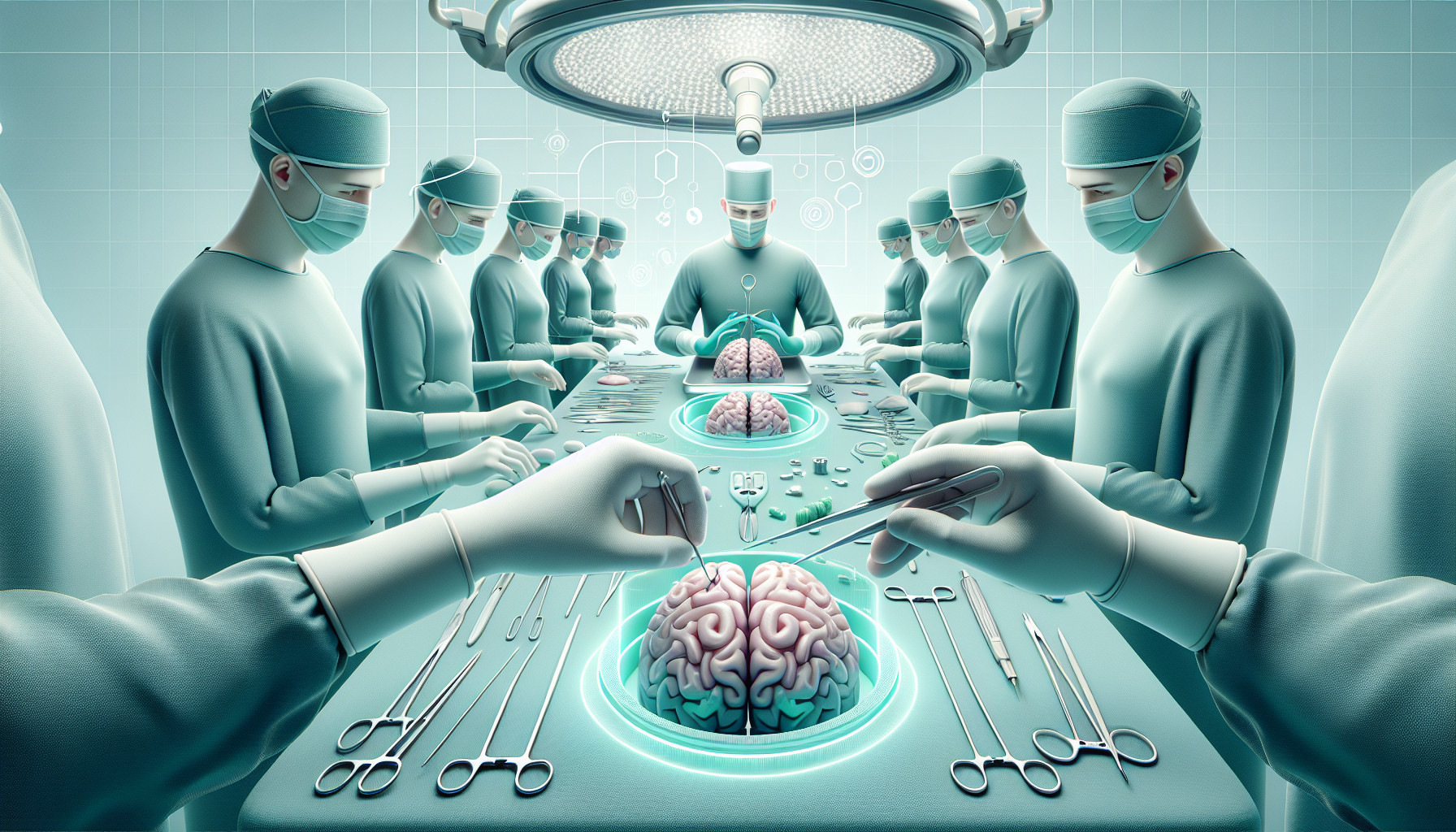Our Summary
This research paper discusses the important role that computational methods and technologies play in neurosurgery, specifically in deep brain stimulation (DBS), a treatment used for various neurological conditions like Parkinson’s disease. These technologies help in every stage of the DBS process, from planning the surgery to adjusting the settings of the implanted device.
The paper gives an overview of different computational tools used in DBS. For instance, neuroimaging techniques (mainly MRI) help surgeons precisely locate where to place the DBS device in the brain. They also help identify the best possible spots for treatment.
The paper also talks about the emerging field of connectomics, which uses MRI scans to understand how different parts of the brain are connected and how DBS affects these connections. Researchers are also looking for ways to identify signs (biomarkers) in brain images and electrical activity that can help optimize DBS treatment.
Lastly, the paper discusses the development of adaptive DBS systems that can automatically adjust their settings based on the patient’s condition. This is done through spatial characterization analysis, a field that is still in its early stages.
FAQs
- How do computational methods and technologies assist in deep brain stimulation (DBS) procedures?
- What is the role of neuroimaging techniques in DBS and what are some examples of these techniques?
- What is the emerging field of connectomics and how does it contribute to optimizing DBS treatment?
Doctor’s Tip
Overall, the advancements in computational methods and technologies have greatly improved the precision and effectiveness of brain surgery, particularly in the case of DBS. Patients undergoing such procedures can benefit from these technologies by ensuring more accurate placement of the devices, personalized treatment plans, and potentially better outcomes. It is important for patients to discuss these technologies with their doctors and understand how they can impact their treatment and recovery process.
Suitable For
Patients who are typically recommended for brain surgery include those with neurological conditions such as Parkinson’s disease, essential tremor, epilepsy, and obsessive-compulsive disorder, among others. These patients may have tried other treatments without success or have severe symptoms that significantly impact their quality of life.
In the case of DBS, patients who have not responded well to medication or other treatments, or who experience significant side effects from medication, may be considered for surgery. Patients who have specific symptoms that are known to respond well to DBS, such as tremors, stiffness, or dyskinesias in Parkinson’s disease, may also be recommended for surgery.
Furthermore, patients who are in good overall health and do not have other medical conditions that would make surgery risky may be considered for brain surgery. It is important for patients to undergo a comprehensive evaluation by a multidisciplinary team, including neurologists, neurosurgeons, and other specialists, to determine if they are suitable candidates for surgery.
Overall, the decision to recommend brain surgery, including DBS, is based on a careful evaluation of the patient’s medical history, symptoms, response to previous treatments, and overall health. It is important for patients to discuss the risks and benefits of surgery with their healthcare providers to make an informed decision about their treatment options.
Timeline
Before brain surgery:
- Patient consults with neurosurgeon and undergoes various preoperative tests such as MRI scans to determine the best course of treatment.
- Patient may undergo a trial stimulation to test the effectiveness of DBS and ensure minimal side effects.
- Surgery is scheduled and patient receives information about the procedure and postoperative care.
After brain surgery:
- Patient undergoes the actual DBS surgery, where the electrodes are implanted in the brain.
- Patient is monitored in the hospital for any complications and is given pain medication as needed.
- Patient may need to stay in the hospital for a few days to recover before being discharged.
- Patient follows up with the neurosurgeon for postoperative care and adjustments to the DBS settings as needed.
- Patient may undergo physical therapy or other rehabilitation services to regain function and improve quality of life.
What to Ask Your Doctor
Some questions a patient should ask their doctor about brain surgery, specifically deep brain stimulation, include:
- What specific condition or symptoms is the surgery intended to treat?
- What are the potential risks and complications associated with the surgery?
- How experienced are you with performing this type of brain surgery?
- What is the success rate of this surgery for my condition?
- How long is the recovery process expected to be, and what can I expect during that time?
- Will I need to undergo any additional tests or evaluations before the surgery?
- How will the placement of the DBS device be determined, and what factors are considered in this decision?
- Will I need to make any lifestyle changes or adjustments after the surgery?
- How often will I need to follow up with you after the surgery, and what ongoing care will be required?
- Are there any alternative treatments or therapies that I should consider before proceeding with brain surgery?
Reference
Authors: Germann J, Gouveia FV, Beyn ME, Elias GJB, Lozano AM. Journal: Adv Exp Med Biol. 2024;1462:435-451. doi: 10.1007/978-3-031-64892-2_26. PMID: 39523281
